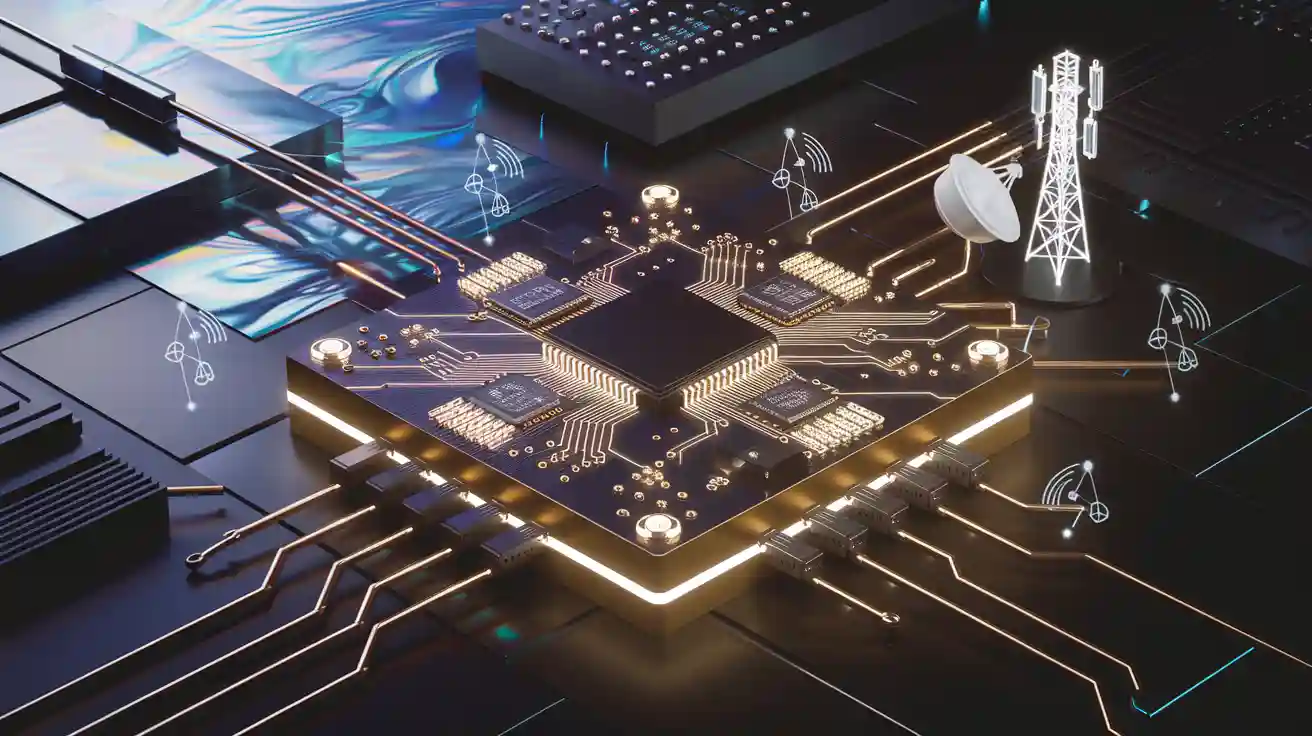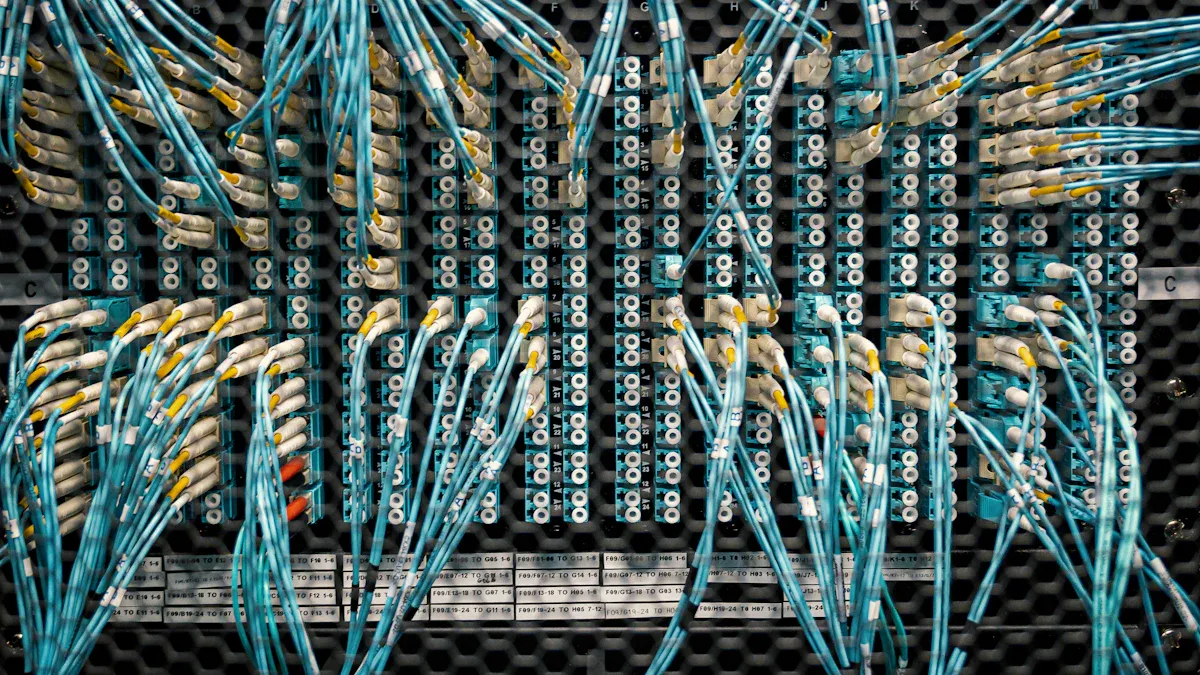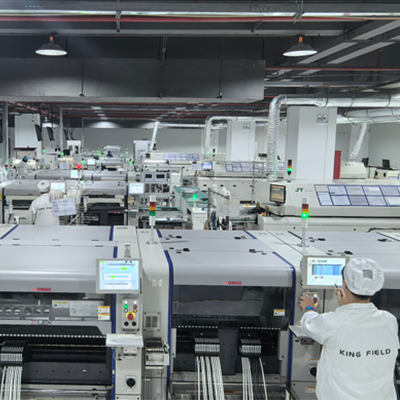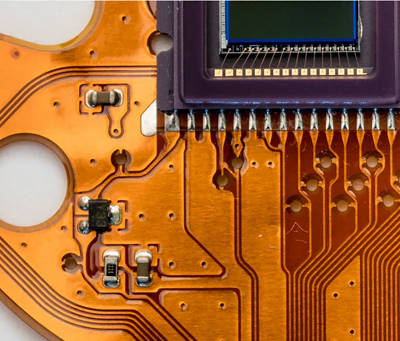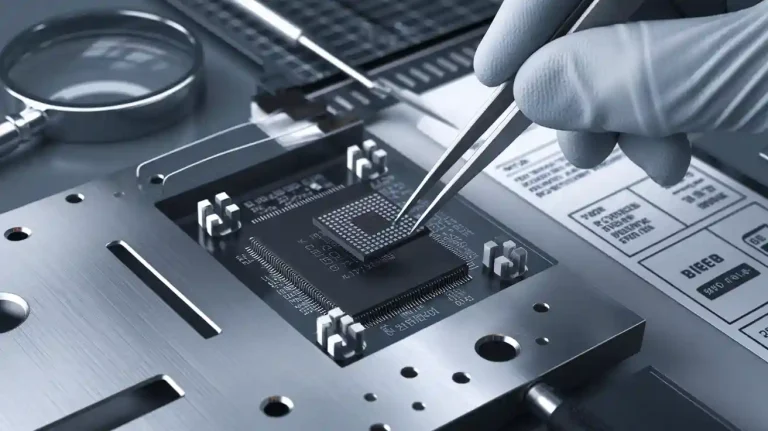Top 10 Applications of LED PCBs in the Telecom Industry
Telecom LED PCB technology drives innovation across telecommunications. Key applications include LED indicators, display backlighting, base station indicators, PBX and VoIP systems, fiber optic systems, data center lighting, power supply units, remote monitoring, outdoor cabinets, and emergency lighting. These solutions enhance communication equipment by offering greater efficiency, reliability, and energy savings.
Telecom infrastructure depends on advanced LED PCB solutions to support rapid, reliable data transfer and improved operational performance.
Key Takeaways
- LED PCBs improve telecom equipment by providing clear status indicators that help technicians quickly spot issues and reduce downtime.
- LED backlighting enhances display visibility with bright, energy-efficient lighting that adapts to different environments and saves power.
- LED PCBs support reliable and compact designs in base stations, PBX, VoIP, fiber optic systems, and power supplies, boosting network performance and efficiency.
- Using LED PCBs in data centers, outdoor cabinets, and remote monitoring systems increases safety, lowers energy costs, and ensures stable operation even in harsh conditions.
- Emergency lighting with LED PCBs offers instant, durable illumination during power outages, helping protect personnel and maintain telecom operations.
LED Indicators
Usage
LED indicators play a vital role in telecom equipment. Engineers use these small lights to show the status of devices such as routers, switches, and signal amplifiers. Each LED can represent a different function. For example, a green light might show that a device is powered on, while a red light could signal a fault or error. Technicians rely on these indicators to quickly check the health of network hardware.
Telecom led pcb technology enables the integration of multiple LEDs onto a single board. This design allows for compact and organized layouts inside telecom devices. Manufacturers often choose LED PCBs because they provide stable performance and can handle continuous operation. In many applications, LED indicators help reduce downtime by making it easy to spot issues.
Note: LED indicators offer instant visual feedback, which helps technicians diagnose problems without special tools.
Benefits
LED indicators provide several important benefits in the telecom industry:
- Quick Status Checks: Technicians can see the operational state of equipment at a glance.
- Reduced Maintenance Time: Fast identification of faults leads to quicker repairs.
- Energy Efficiency: LEDs use less power than traditional bulbs, which lowers energy costs.
- Long Lifespan: LED indicators last longer, reducing the need for frequent replacements.
- Compact Design: LED PCBs allow for more indicators in a smaller space, which is ideal for modern, slim telecom devices.
These benefits make LED indicators one of the most valuable applications in telecom hardware. Reliable status lights improve network uptime and help companies maintain high service quality.
Display Backlighting
Usage
Telecom equipment often features digital displays that show critical information, such as signal strength, network status, or error codes. LED PCBs provide the backlighting for these displays, ensuring clear visibility in various lighting conditions. Service centers and network operation rooms rely on these illuminated screens to monitor and control telecom systems efficiently. LED backlighting supports both small indicator panels and large control room displays, making it a versatile solution across different telecom devices.
LED PCBs allow for precise control over brightness and color, which helps technicians read data quickly. Many telecom companies choose LED backlighting because it fits into compact spaces and supports thin display designs. This technology also adapts to changing environments by adjusting brightness based on ambient light, which improves user experience and reduces eye strain.
Note: LED backlighting ensures that telecom displays remain readable even in low-light or high-glare environments, supporting reliable operations around the clock.
Benefits
LED backlighting offers several advantages over older technologies like CCFL and traditional incandescent bulbs. The following tables highlight key performance differences and benchmarks relevant to telecom display applications:
| Display Technology | Brightness (nits) | Power Consumption | Key Benefits |
|---|---|---|---|
| LCD (with CCFL) | Moderate | Higher | Older tech, less efficient |
| LED Backlit LCD | 300-600 | Lower | Brighter, more energy efficient |
| OLED | True blacks | Low | Fast response, energy efficient in dark scenes |
| QLED | Up to 2000 | Moderate | Enhanced brightness, color accuracy |
| Mini-LED / Micro-LED | High | Improved | Better contrast, brightness control |
| Performance Benchmark | Telecom Display Backlighting Advantage |
|---|---|
| Energy Efficiency | Up to 75-80% less energy use, reducing costs |
| Lifespan | 25,000–50,000 hours, fewer replacements needed |
| Thermal Management | Effective heat dissipation, stable brightness |
| Instant-On Capability | Immediate full brightness, crucial for real-time telecom monitoring |
| Durability under Frequent Use | Withstands frequent switching, ideal for busy telecom environments |
| Low-Temperature Operation | Reliable in cold conditions, suitable for outdoor telecom equipment |
A recent study shows that self-adaptive LED backlighting can dynamically adjust brightness based on content and ambient light, improving user experience and conserving power. This method can enhance quality of experience by over 30%, which is significant for telecom centers that operate continuously.
LED backlighting stands out among display applications for its ability to deliver high brightness, low power consumption, and long-term reliability. These features help telecom providers maintain efficient, cost-effective, and dependable operations.
Base Station Indicators
Usage
Base stations form the backbone of modern telecom networks. These stations manage wireless communication between user devices and the core network. LED PCBs play a crucial role in these environments. Engineers install LED PCBs in base station cabinets to serve as clear status indicators. Each LED light signals a specific function or operational state. For example, a green LED might show normal operation, while a yellow or red LED could indicate a warning or fault.
Technicians rely on these indicators to monitor equipment health quickly. LED PCBs allow for the integration of multiple status lights on a single board. This design keeps the layout organized and easy to interpret. In large telecom installations, LED PCBs help staff identify issues without opening equipment or using diagnostic tools. The use of LED PCBs in base stations has become standard practice. Their presence highlights the industry’s focus on reliability and low-maintenance operation.
LED PCBs in base station indicators provide instant feedback, making network management more efficient and reducing the risk of unnoticed faults.
Benefits
LED PCBs offer several advantages when used as base station indicators:
- Enhanced Reliability: LED PCBs deliver consistent performance, even in demanding telecom environments.
- Low Maintenance: LEDs have a long lifespan and rarely need replacement, which reduces maintenance visits.
- Energy Efficiency: LED technology uses less power than traditional indicator bulbs, lowering operational costs.
- Quick Fault Detection: Technicians can spot problems at a glance, which speeds up troubleshooting and repair.
- Compact Design: Multiple indicators fit on a single PCB, saving valuable space inside base station cabinets.
A table below summarizes the key benefits:
| Feature | Impact on Base Stations |
|---|---|
| Long Lifespan | Fewer replacements, less downtime |
| Low Power Use | Reduced energy bills |
| Instant Feedback | Faster response to network issues |
| Durable Build | Withstands harsh telecom environments |
LED PCBs have become essential in base station indicator systems. Their ability to signal system status and enhance reliability supports the smooth operation of telecom networks.
Telecom LED PCB in PBX & VoIP
Usage
PBX (Private Branch Exchange) and VoIP (Voice over Internet Protocol) systems form the backbone of modern office communication. These systems manage internal and external calls, voicemail, and conferencing features. Telecom LED PCB technology plays a key role in these devices. Engineers use LED PCBs to provide visual status indicators for call activity, line status, and network connectivity. For example, LEDs show when a line is in use, on hold, or experiencing a fault.
LED PCBs also support compact and organized layouts inside PBX and VoIP hardware. This design allows manufacturers to create smaller, more efficient devices that fit easily into office environments. LED PCBs help reduce heat buildup, which is important for equipment that operates continuously. Many PBX and VoIP systems rely on these PCBs to ensure reliable performance and easy maintenance.
LED indicators in PBX and VoIP devices help users and technicians quickly identify system status, improving communication efficiency in busy workplaces.
Benefits
Telecom LED PCB solutions offer several advantages for PBX and VoIP applications:
- Energy Efficiency: LED PCBs consume less power than traditional lighting, lowering operational costs for businesses.
- Compactness: The slim design of LED PCBs enables the production of smaller, space-saving communication devices.
- Reliability: Advanced manufacturing and testing processes, such as environmental and stress testing, X-ray inspection, and automated optical inspection, ensure robust performance. Companies like Highleap Electronic follow strict industry standards, including ISO 9001 and RoHS compliance, to guarantee quality.
- Long Lifespan: LEDs last longer than conventional bulbs, reducing the need for frequent replacements and minimizing downtime.
- Clear Visual Feedback: LED indicators provide instant information about call status, network health, and device operation.
Reliability tests for VoIP devices include both subjective and objective measures. These tests use metrics like Mean Opinion Score (MOS) and R-factors to evaluate call quality. Automated tools capture network performance data, checking for packet loss, jitter, delay, and echo. Network management software monitors these metrics in real time, ensuring ongoing reliability. Testing methods include both active and passive approaches, and standards such as ITU P.862 PESQ align results with human perception.
| Benefit | Impact on PBX & VoIP Systems |
|---|---|
| Energy Efficiency | Lower power bills, greener offices |
| Compactness | Saves space in communication racks |
| Reliability | Fewer failures, stable connections |
| Long Lifespan | Less maintenance, more uptime |
| Visual Feedback | Faster troubleshooting, better user experience |
Telecom LED PCB technology helps PBX and VoIP systems deliver dependable, efficient, and user-friendly communication for organizations of all sizes.
Fiber Optic Systems
Usage
Fiber optic systems form the backbone of modern telecom networks. These systems use light to transmit data over long distances at high speeds. LED PCBs play a critical role in these systems. Engineers use LED PCBs as light sources for transmitting signals through optical fibers. The LED emits light pulses that represent digital data. Receivers at the other end detect these pulses and convert them back into electrical signals.
Telecom companies install LED PCBs in devices such as optical transmitters, receivers, and repeaters. These devices help maintain strong and clear signals across the network. LED PCBs also support status indicators and diagnostic lights in fiber optic equipment. These indicators show if the system works correctly or if there is a problem. Technicians rely on these lights to monitor performance and troubleshoot issues quickly.
Note: LED PCBs in fiber optic systems help ensure fast and reliable data transmission, which is essential for internet, phone, and video services.
Benefits
LED PCBs provide several important benefits in fiber optic systems:
- High-Speed Data Transmission: LEDs can switch on and off very quickly. This speed allows them to send large amounts of data in a short time.
- Energy Efficiency: LED PCBs use less power than older light sources. This efficiency reduces energy costs for telecom providers.
- Long Lifespan: LEDs last much longer than traditional bulbs. This durability means fewer replacements and less maintenance.
- Stable Performance: LED PCBs offer consistent light output. Stable signals help prevent data loss and improve network reliability.
- Compact Design: The small size of LED PCBs allows for more compact and lightweight fiber optic equipment.
The table below summarizes the key benefits:
| Benefit | Impact on Fiber Optic Systems |
|---|---|
| High-Speed Switching | Faster data transfer |
| Low Power Use | Lower operational costs |
| Long Lifespan | Less frequent maintenance |
| Stable Output | Reliable signal quality |
| Compact Size | Smaller, more efficient devices |
LED PCBs help fiber optic systems deliver fast, reliable, and cost-effective communication. These advantages make them a vital part of the telecom industry’s future.
Data Center Lighting
Usage
Data centers serve as the core of modern telecom infrastructure. These facilities house servers, networking equipment, and storage systems. Proper lighting in data centers supports safe operations and efficient maintenance. LED PCBs provide the main lighting solution for data centers. Engineers install LED PCBs in server racks, aisles, and control rooms. These lights help technicians see equipment clearly during repairs or upgrades.
LED PCBs offer flexible placement options in data centers. They fit into tight spaces and provide even illumination. Many data centers use motion-activated LED lighting to save energy. Some facilities use color-coded LED PCBs to signal different zones or alert staff to specific issues. LED PCBs also support emergency lighting in data centers, ensuring visibility during power outages.
Note: Good lighting in data centers reduces the risk of accidents and helps staff work more efficiently.
Benefits
LED PCBs bring many advantages to data centers. These benefits improve both daily operations and long-term reliability.
- Energy Savings: LED PCBs use less electricity than traditional bulbs. Data centers lower their energy bills and reduce their carbon footprint.
- Long Lifespan: LEDs last for thousands of hours. Data centers spend less on replacements and maintenance.
- Low Heat Output: LED PCBs produce less heat. This helps data centers maintain stable temperatures and reduces cooling costs.
- Consistent Brightness: LED PCBs provide steady light. Technicians in data centers can see clearly at all times.
- Flexible Design: LED PCBs fit into many parts of data centers, from server racks to overhead fixtures.
The table below summarizes the main benefits for data centers:
| Benefit | Impact on Data Centers |
|---|---|
| Energy Efficiency | Lower operational costs |
| Long Lifespan | Fewer replacements needed |
| Low Heat Emission | Easier temperature control |
| Reliable Lighting | Improved safety and productivity |
| Flexible Placement | Custom lighting solutions |
Data centers rely on LED PCBs to create a safe, efficient, and cost-effective environment. These lighting solutions support the demanding needs of modern telecom operations.
Power Supply Units
Usage
Power supply units (PSUs) serve as the heart of telecom equipment. They convert incoming electrical power into the precise voltages and currents required by sensitive telecom circuits. LED PCBs play a vital role in these units. Engineers use LED PCBs to provide status indicators, monitor voltage levels, and support internal lighting for maintenance. These boards also help manage heat inside the PSU, which is critical for reliable operation.
Telecom manufacturers often select LED PCBs with advanced substrates, such as aluminum-clad or ceramic-filled laminates. These materials improve heat dissipation and reduce thermal resistance. Designers optimize circuit paths on the PCB to minimize energy loss and boost conversion efficiency. LED PCBs also support compact layouts, which allow PSUs to fit into smaller spaces within telecom racks.
Note: Proper LED PCB integration in power supply units ensures stable performance, even under heavy network loads.
Benefits
LED PCBs bring several important benefits to power supply units in telecom systems:
- Superior Thermal Management: Enhanced PCB materials and optimized LED placement help dissipate heat efficiently. This reduces the risk of overheating and extends component life.
- Higher System Efficiency: Compact current paths and advanced power components, such as Gallium Nitride or Silicon Carbide semiconductors, lower switching losses and improve power conversion.
- Reduced Electromagnetic Interference (EMI): Multi-layer PCB layouts with internal copper shielding and dual-stage filtering decrease EMI, ensuring cleaner power delivery.
- Improved Reliability: Stable auxiliary supplies and smart standby modes in power ICs reduce thermal stress and standby power use, supporting long-term operation.
- Consistent Performance: Testing methods like infrared thermography and power analyzers verify that the PSU maintains efficiency and reliability over time.
A study shows that optimizing LED placement and using high-conductivity PCB materials can lower LED junction temperatures by up to 26°C. This improvement increases luminous efficacy and reduces energy consumption, which directly benefits telecom power supplies.
| Feature | Impact on Power Supply Units |
|---|---|
| Thermal Management | Prevents overheating, longer lifespan |
| Advanced Components | Higher efficiency, less energy waste |
| EMI Reduction | Stable, interference-free operation |
| Smart Power Modes | Lower standby power, less heat |
| Rigorous Testing | Reliable, consistent performance |
LED PCBs help telecom power supply units deliver efficient, reliable, and safe power—key factors for uninterrupted network service.
Remote Monitoring
Usage
Remote monitoring systems in telecom networks rely on LED PCBs to provide real-time status updates and alerts. These systems track the health and performance of equipment such as base stations, power supplies, and network switches. LED PCBs serve as visual indicators, showing normal operation, warnings, or faults. Engineers often install these boards in remote or hard-to-reach locations, where on-site checks are difficult. The LED indicators update automatically, allowing technicians to monitor equipment from a central location.
LED PCBs in remote monitoring systems must meet strict design and performance standards. Designers select trace widths and copper weights to handle expected currents safely. They use distinct ground planes and separate voltage areas to reduce electrical noise and improve signal quality. Enclosures made from 3D printed materials provide electrical insulation and passive cooling, which helps maintain safe operating temperatures. Logic control circuits ensure that LED indicators refresh every 500 milliseconds and enter error states if communication delays exceed three seconds. This setup supports reliable, real-time monitoring.
Key monitored data in remote LED PCB systems include:
- Thermal imaging results showing safe temperatures (max 45.6 °C under 4.5 A load)
- Signal delay measurements (no delays over 350 ms in large sample tests)
- PCB design details (10 mil trace width, 1 oz copper, up to 500 mA on traces)
- Logic control for timely LED updates and error detection
- Electrical noise reduction through careful PCB layout
- Enclosure design for insulation and cooling
Benefits
LED PCBs offer several advantages for remote monitoring in telecom applications. They provide higher reliability than traditional lighting devices. LEDs have a useful life that often exceeds 44,000 hours. Unlike incandescent or fluorescent bulbs, LEDs degrade slowly over time instead of failing suddenly. This gradual decline allows for predictable maintenance and fewer unexpected outages.
Remote monitoring systems with LED PCBs use real-time health checks and advanced algorithms to predict failures before they occur. This approach improves reliability and maintainability. LEDs also resist vibration and start up instantly, making them ideal for telecom environments. Proper thermal management and controlled operating conditions further extend their lifespan. These features make LED PCBs a superior choice for remote monitoring, ensuring stable performance and reducing maintenance costs over time.
Outdoor Cabinets
Usage
Outdoor cabinets protect vital telecom equipment from harsh weather, dust, and unauthorized access. Telecom companies install these cabinets along roadsides, on rooftops, and in remote locations. LED PCBs serve as essential components inside these cabinets. Engineers use LED PCBs for internal lighting, making it easier to inspect and maintain equipment during both day and night. LED indicators on the PCBs display the operational status of power supplies, batteries, and network devices.
Technicians often work in challenging environments. LED PCBs provide bright, reliable illumination, which helps them identify cables, ports, and faults quickly. Many outdoor cabinets feature motion-activated LED lighting. This feature conserves energy and extends the lifespan of the LEDs. Some cabinets use color-coded LED indicators to signal different types of alerts, such as temperature warnings or unauthorized access.
Tip: LED PCBs in outdoor cabinets help technicians perform maintenance safely and efficiently, even in low-light or adverse weather conditions.
Benefits
LED PCBs offer several advantages for outdoor telecom cabinets:
- Durability: LED PCBs withstand extreme temperatures, humidity, and vibration. This durability ensures consistent performance in outdoor settings.
- Energy Efficiency: LEDs consume less power than traditional lighting. Outdoor cabinets often rely on backup batteries or solar panels, so energy savings matter.
- Long Lifespan: LEDs last much longer than incandescent or fluorescent bulbs. Fewer replacements mean lower maintenance costs.
- Enhanced Safety: Bright, instant-on lighting reduces the risk of accidents during repairs or inspections.
- Clear Status Indication: LED indicators provide immediate feedback on equipment health, helping technicians respond to issues faster.
| Feature | Benefit for Outdoor Cabinets |
|---|---|
| Rugged Design | Reliable in harsh environments |
| Low Power Use | Supports off-grid power solutions |
| Long Service Life | Reduces maintenance visits |
| Instant Lighting | Improves technician safety |
| Visual Alerts | Speeds up troubleshooting |
LED PCBs transform outdoor telecom cabinets into safer, more efficient, and more reliable installations. These benefits support uninterrupted network service and reduce operational costs for telecom providers.
Emergency Lighting
Usage
Emergency lighting in telecom facilities ensures that critical areas remain illuminated during power outages or unexpected failures. Engineers install LED PCBs in backup lighting systems inside server rooms, control centers, and outdoor enclosures. These lights activate automatically when the main power supply fails. LED PCBs provide bright, reliable illumination that helps technicians navigate equipment safely and perform urgent repairs.
Telecom companies often use LED PCBs in exit signs, pathway lights, and emergency beacons. These systems guide staff to safety and highlight important equipment during emergencies. LED PCBs support compact designs, which fit easily into tight spaces within telecom cabinets and racks. Many emergency lighting systems include battery backups. LED PCBs draw minimal power, so batteries last longer and provide extended lighting during outages.
Tip: Regular testing of emergency LED lighting systems helps ensure readiness for unexpected events.
Benefits
LED PCBs offer several key advantages for emergency lighting in telecom environments:
- Instant Illumination: LEDs reach full brightness immediately. Staff can respond quickly during emergencies.
- Energy Efficiency: Low power consumption extends battery life. Facilities maintain lighting for longer periods without external power.
- Long Lifespan: LEDs operate for thousands of hours. Maintenance teams replace lights less often, reducing costs.
- Durability: LED PCBs resist shock and vibration. Emergency lights remain functional in harsh conditions.
- Compact Size: Small PCB designs fit into limited spaces. Engineers can install more lights where needed.
The table below summarizes the main benefits:
| Feature | Benefit in Emergency Lighting |
|---|---|
| Instant-On | Immediate visibility |
| Low Power Use | Longer battery backup |
| Long Service Life | Fewer replacements |
| Rugged Design | Reliable in tough environments |
| Space Efficiency | Flexible installation options |
Emergency lighting with LED PCBs helps telecom facilities maintain safety and operational continuity. Reliable illumination supports quick decision-making and protects both personnel and equipment during critical situations.
Telecom LED PCB Table
This table offers a clear overview of the top 10 uses for telecom LED PCB technology. Readers can quickly compare each application, its main function, and the benefits it brings to telecom systems.
| Application | Main Usage | Key Benefits |
|---|---|---|
| LED Indicators | Show device status in routers, switches, amplifiers | Quick checks, reduced downtime, energy savings |
| Display Backlighting | Illuminate screens and control panels | High brightness, low power, long lifespan |
| Base Station Indicators | Signal operational state in base stations | Fast fault detection, reliability, compact design |
| PBX & VoIP Systems | Indicate call status and network health | Energy efficiency, clear feedback, small size |
| Fiber Optic Systems | Transmit light signals and show system health | High-speed data, stable output, low maintenance |
| Data Center Lighting | Light server racks and aisles | Energy savings, low heat, flexible placement |
| Power Supply Units | Indicate voltage, support internal lighting | Thermal control, efficiency, EMI reduction |
| Remote Monitoring | Provide real-time alerts and equipment status | Reliability, predictive maintenance, long life |
| Outdoor Cabinets | Light interiors, signal equipment health | Durability, safety, energy efficiency |
| Emergency Lighting | Illuminate during power loss or emergencies | Instant-on, long battery life, rugged design |
The table above helps telecom professionals and students understand how each telecom led pcb application supports network performance. Each row highlights a unique use case, making it easy to see how these solutions improve efficiency, safety, and reliability across telecom infrastructure.
Readers can use this table as a reference when selecting LED PCB solutions for new projects or upgrades. The quick comparison format saves time and supports informed decision-making.
Telecom LED PCB solutions remain vital in modern telecommunications, supporting efficiency, reliability, and sustainability. The table below shows that PCBs make up a significant portion of telecom devices and contain stable levels of precious metals, while newer designs reduce toxic materials:
| Device Type | PCB Weight (% of product) | Ag (ppm) | Au (ppm) | Pd (ppm) | Pb (ppm) | Notes on Trends |
|---|---|---|---|---|---|---|
| Routers, modems, hubs | 43% | 1213 | 199 | 20 | 3413 | Precious metals stable; Pb content similar to phones despite later production years |
| Mobile phones | 21% | 2640 | 1051 | 119 | 3747 | Precious metals stable; higher Pb content than smartphones |
| Smartphones | 21% | 2773 | 1083 | 55 | 260 | Precious metals stable; significant decrease in Pb content due to regulations |
Comparative studies highlight several advances:
- Embedded Component Packaging reduces PCB size and improves reliability.
- Rigid-flex bonding boards enable 3D installation and better integration.
- These innovations support miniaturization and robust assembly, which are essential for future telecom systems.
Telecom professionals can explore these technologies to keep networks efficient and ready for future demands.
FAQ
What is an LED PCB in telecom equipment?
An LED PCB is a printed circuit board that holds and connects light-emitting diodes. Telecom engineers use these boards to provide lighting, status indicators, and signal transmission in network devices.
Why do telecom companies prefer LED PCBs over traditional lighting?
LED PCBs use less energy, last longer, and fit into smaller spaces. These features help telecom companies save money and reduce maintenance needs.
How do LED PCBs improve network reliability?
LED PCBs offer instant feedback and clear status signals. Technicians can spot problems quickly, which helps prevent long outages and keeps networks running smoothly.
Can LED PCBs handle harsh environments?
Yes. Many LED PCBs use durable materials and special coatings. These features protect them from heat, moisture, and vibration in outdoor or industrial telecom settings.
Are LED PCBs easy to maintain or replace?
Most LED PCBs have a long lifespan and rarely need replacement. When needed, technicians can swap them out quickly due to their compact and modular design.


